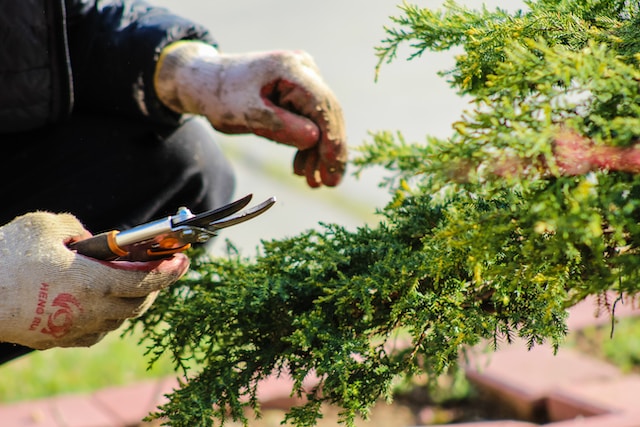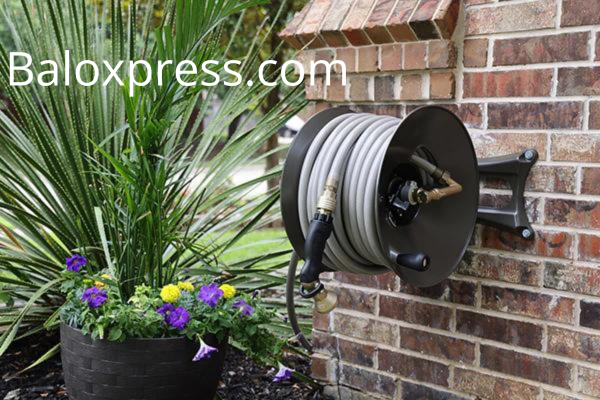Are your garden tools looking a bit blunt and not so good to carry out your garden activities? If so, it’s time to learn how to sharpen garden tools by hand. Hand sharpening is an easy and effective way to make sure your garden tools stay in good condition always. In this ultimate guide to hand sharpening garden tools, we’ll provide tips for making sure your blades are as sharp as possible – so you can say goodbye to dull blades.
Table of Contents
Why Sharpening Garden Tools is Important?
Garden tool sharpening may not be the most glamorous task in the world, but it is certainly an important one which every gardener must do. You may be tempted to overlook this step in your garden maintenance routine, but trust me when I say that sharpening your garden tools is crucial for several reasons.
First and foremost, sharpening your garden tools ensures that they perform at their best. Dull blades on pruners, shears, and even shovels can make your gardening tasks much more difficult and time-consuming. When your tools are sharp, they cut through branches, stems, and soil with ease, allowing you to complete your tasks more efficiently. Imagine the frustration of trying to trim a stubborn branch with a dull pair of pruners—it can feel like an impossible task. But with sharp tools, your gardening experiences will be a breeze.
Not only do sharp garden tools make your gardening tasks easier, but they also produce cleaner cuts. When you use a sharp blade, it slices cleanly through the plant material, promoting healthier growth and minimizing the risk of disease or infection.
Dull blades, on the other hand, can crush and tear plant tissue, leaving ragged edges that are more prone to damage and infection. By keeping your garden tools sharp, you are helping to maintain the overall health and vitality of your plants.
Also, sharpening your garden tools regularly helps to extend their lifespan. When blades are dull or blunt, you may be tempted to apply more force to achieve the desired result. This can lead to unnecessary wear and tear on the tools, causing them to break or become damaged more quickly. By taking the time to sharpen your tools, you are investing in their longevity and ensuring that they will continue to serve you well for years to come.
Gathering the Necessary Tools and Materials for Hand Sharpening
Now that you understand the importance of garden tool sharpening, it’s time to gather the necessary tools and materials for hand sharpening. Don’t worry, you don’t need a lot of fancy equipment to get the job done. In fact, you probably already have most of the items you need lying around your home or garden shed.
1. sharpening stone or file

These can typically be found at your local hardware store or garden center. When choosing a sharpening stone, look for one that is specifically designed for sharpening garden tools. You’ll also want to consider the grit level of the stone. Coarser grits, around 200 or 400, are ideal for reshaping and repairing damaged edges, while finer grits, around 1000 or 2000, are best for honing and polishing.
2. Lubricant

Next, you’ll need some sort of lubricant to use with your sharpening stone. This could be water, honing oil, or even soapy water. The lubricant helps to reduce friction and heat during the sharpening process, ensuring that your tools are sharpened effectively without causing damage to the blade.
You’ll also need a flat surface to work on. This could be a sturdy workbench or table, or even the ground, as long as it provides a stable surface for sharpening your tools.
Lastly, you’ll need some basic safety equipment. Sharpening garden tools can be a messy task, so wearing gloves and safety glasses is highly recommended to protect your hands and eyes from any flying debris.
With these tools and materials in hand, you’ll be well-prepared to start sharpening your garden tools by hand. Remember, the key to successful sharpening is taking your time and following the proper techniques, which we’ll cover in the next section. So, grab your sharpening stone and let’s get started!
8 Steps To Sharpen Garden Tools By Hand
Garden tool sharpening is a skill that every gardener should master. With a few simple steps, you can transform dull, ineffective tools into sharp, efficient ones. In this step-by-step guide, we’ll walk you through the process of sharpening different types of garden tools by hand.
1. Start by gathering all the necessary tools and materials. As mentioned earlier, you’ll need a sharpening stone or file, a lubricant, a flat surface to work on, and some safety equipment like gloves and safety glasses.
2. Begin by inspecting your garden tools for any signs of damage or wear. Look for chips, nicks, or dull edges. If you notice any damage, use a coarse grit sharpening stone to reshape the edge and remove any imperfections.
3. Apply a small amount of lubricant to your sharpening stone. This will help reduce friction and prevent the blade from overheating.
4. Hold the garden tool firmly in one hand and position the blade against the sharpening stone at a 20-degree angle. Apply gentle pressure and move the blade back and forth across the stone in a sweeping motion. Be sure to maintain the same angle throughout the process.
5. Continue sharpening the blade, periodically checking for progress. You should start to see a shiny, reflective edge forming along the blade.
6. Once you are satisfied with the sharpness, switch to a finer grit sharpening stone to hone and polish the blade. Follow the same process as before, using light pressure and maintaining the correct angle.
7. After sharpening, wipe away any residue or metal shavings from the blade with a clean cloth. Inspect the blade one final time to ensure it is sharp and free from any burrs.
8. Repeat this process for each of your garden tools, adjusting the angle and pressure as necessary depending on the type of tool.
By following these steps, you can keep your garden tools sharp and ready for action. Remember, regular maintenance and sharpening are key to ensuring the longevity and effectiveness of your tools. So, don’t neglect this important task and say goodbye to dull blades in your garden!
Tips for Maintaining Sharp Garden Tools

Now that you know how to sharpen your garden tools by hand, it’s important to learn some tips and tricks for maintaining their sharpness. After all, you don’t want to go through the effort of sharpening your tools only for them to become dull again quickly. Here are some valuable tips to help you keep your garden tools sharp for longer period of time.
Clean your tools after each use: After using your garden tools, take the time to clean them thoroughly. Remove any dirt, sap, or debris that may have accumulated on the blades. This will prevent buildup and keep your tools functioning optimally.
Dry your tools properly: Moisture can lead to rust, which can damage the sharpness of your blades. After cleaning your tools, make sure to dry them thoroughly before storing them. You can use a clean towel or cloth to wipe them dry, or even let them air dry in a sunny spot.
Oil your tools: To further protect your tools from rust, apply a thin coat of oil to the blades. You can use any household oil, such as mineral oil or even cooking oil. Simply wipe a small amount onto the blades and then wipe off any excess.
Store your tools properly: Proper storage is essential for maintaining the sharpness of your garden tools. Make sure to store them in a dry, well-ventilated area, away from moisture. You can hang them on hooks or store them in a tool shed or garage. Avoid storing them in a damp area or leaving them exposed to the elements.
Regularly inspect your tools: It’s a good idea to periodically inspect your tools for any signs of damage or wear. Look for chips, cracks, or loose parts. If you notice any issues, take the time to repair or replace the affected parts. This will ensure that your tools remain in good working condition.
By following these tips and tricks, you can prolong the sharpness of your garden tools and ensure that they continue to serve you well for years to come. Remember, a sharp tool is a happy tool, so take the time to properly maintain your garden tools and say goodbye to dull blades.
Conclusion
Maintaining sharp garden tools is essential for any gardener, and hand sharpening is a simple and effective way to achieve this. In this ultimate guide to hand sharpening garden tools, we have covered why sharpening is important, the necessary tools and materials, a step-by-step guide for sharpening different types of tools, and some tips and tricks for maintaining their sharpness. By following these steps and incorporating them into your garden maintenance routine, you can say goodbye to dull blades and ensure that your tools perform at their best.
Sharp garden tools make gardening tasks easier and more efficient. They cut through branches, stems, and soil with ease, saving you time and frustration. Additionally, sharp blades produce cleaner cuts, promoting healthier growth and reducing the risk of disease or infection. By sharpening your tools regularly, you are contributing to the overall health and vitality of your plants.
In conclusion, investing in the longevity of your garden tools is also important. When blades are dull, you may be tempted to apply more force, which can lead to unnecessary wear and tear on the tools. By taking the time to sharpen them, you are ensuring that they will last for years to come.
Remember to gather the necessary tools and materials, mentioned above before starting the sharpening process.
So, grab your sharpening stone and get started on sharpening those dull blades. Your garden will thank you.




